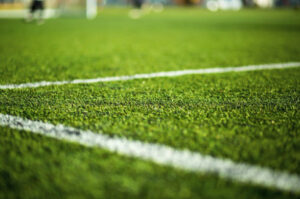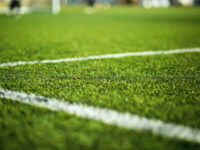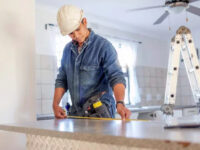Artificial Turf For Soccer Fields
 Artificial turf has come a long way in the last few decades. It has evolved to look more natural and feel better for sports like soccer. The price of turf will depend on several factors, including the type of turf and the size of the field. The climate and quality of the soil can also influence it. Click https://vantaoutdoors.com/sod-installation/ to learn more.
Artificial turf has come a long way in the last few decades. It has evolved to look more natural and feel better for sports like soccer. The price of turf will depend on several factors, including the type of turf and the size of the field. The climate and quality of the soil can also influence it. Click https://vantaoutdoors.com/sod-installation/ to learn more.
Artificial turf is a great alternative to natural grass because it doesn’t require water, fertilizers, or pesticides. However, it does cost more upfront than a traditional grass field. That can be offset by saving money on water, reducing the need to purchase fertilizers and herbicides, and minimizing maintenance costs. In addition, artificial turf does not need mowing and edging, and it isn’t affected by weather conditions or animals like dogs or deer.
Turf soccer fields are built to last and are an excellent option for schools, parks, clubs, and other facilities. They can withstand heavy traffic and have a high-quality, comfortable, and durable surface. In addition, artificial turf does not fade and is resistant to UV rays. That makes it a better option than real grass, especially if the location is exposed to sunlight for most of the day.
The price of a turf soccer field can vary depending on the type and brand of synthetic turf used, the pile height, and the area size. A higher pile height will increase the cost, but it will also improve the feel and performance of the field.
It is important to consider the total budget when constructing an artificial soccer field, and it is best to work with a contractor who will provide all-inclusive pricing. That will include the base, drainage system, electrical, fencing, and lighting. It is also important to note that labor accounts for 50% – 60% of the total project costs, so getting quotes from several contractors before making any decisions is wise.
A high-quality artificial soccer field can last between 10 and 20 years. Initially, it may take longer to break even than a natural grass soccer field because of the initial investment. Still, in the long run, it will save money on utility bills, reduce maintenance costs, and eliminate the need for irrigation. Choosing a contractor with experience in the construction of sports fields is important, as they will know how to design an area safe for athletes.
Artificial turf is a great option for soccer fields because it provides a smooth, consistent surface that feels good underfoot and allows players to move quickly. It also saves water and reduces maintenance costs by eliminating the need for chemical fertilizers, pesticides, and herbicides. Choosing synthetic turf can help a school, park, or professional sports arena save an average of 2,200 gallons of water each year.
Synthetic turf is a durable surface that can be used for many years without wearing out, and it’s often cheaper than natural grass. However, the quality of the turf and how it’s installed can make a difference in its longevity. The best way to ensure the durability of a synthetic field is to choose an experienced installer. The installation process should include proper base preparation, seaming, and infill installation. High-quality synthetic fibers and backings are essential for long-term performance.
The surface of a soccer field should be soft and resilient enough to absorb the force of a player’s impact. That will protect the players from injuries and reduce wear and tear on their feet. Several types of synthetic turf are available, but a quality product will have a dense surface designed to absorb the impact of a player’s cleats.
Various options for infill and pad can enhance the durability and comfort of a synthetic soccer field. The type of infill and pad you choose will depend on the activity level for which you plan to use the area. For example, a low-cost polypropylene infill is suitable for recreational use and can handle a reasonable amount of wear and tear.
In addition to the quality of the turf, it’s important to consider the materials used for the base and infill. For example, a well-constructed synthetic turf will be made with UV-stabilized fibers that prevent fading and can hold up to the elements. It will also be backed by a strong material that is resistant to damage and tearing.
Artificial turf is safer for athletes than natural grass because it’s designed to withstand repeated impacts without breaking down or becoming muddy. In addition, it can withstand heavy rain and snowfall, which would otherwise cause games to be canceled or postponed.
Artificial turf soccer fields are a great alternative to natural grass fields. They provide a true roll of the ball and are more durable and easier to maintain. In addition, they do not require constant watering like natural grass fields, so they save on water costs. They are also more environmentally friendly since they do not produce greenhouse gases or require chemicals for irrigation.
There are several types of synthetic turf, and they vary in price, durability, and appearance. Polypropylene turf is the cheapest option, but it is not very durable and cannot withstand high temperatures. It is best used for sports complexes in cooler climates. Other options include nylon and polyethylene, which are more expensive but are extremely durable and long-lasting. They are ideal for use in professional stadiums.
Many people have concerns about the safety of artificial turf soccer fields. However, the available data do not support a link between playing on artificial turf and cancer. The most serious concern is that synthetic turf fields may increase the risk of abrasions and lacerations. The surface is much harder than natural grass, and hard impacts can lead to injury. However, most injuries sustained during practice or competition occur in the upper and lower extremities, not on the head or torso.
Another concern is that the rubber crumb infill on synthetic turf can cause heat stress and skin irritation. That can be especially dangerous in summer when the temperature is high. The good news is that shock pads can now be installed underneath the surface, reducing this problem.
Another concern is that it is difficult to transport goals from one end of a field to the other without damaging the surface. That can be a big issue for multi-use areas, where multiple games and practices occur at the same time. In such cases, the soccer goals are frequently dragged across the artificial turf instead of carried using proper transportation protocols, which can result in minor damage to the turf and displacement of the infill.
One of the primary advantages of artificial turf over natural grass is that it requires less maintenance. It is ready to be played on in virtually all weather conditions, unlike natural grass, which can become muddy and uneven after rain or snow. That means that teams can train and play games in all seasons, which allows for a more consistent schedule. Also, turf can stand up to snow better than natural grass, which can damage the field and cause injuries to players.
Nevertheless, keeping an eye on the field for signs of wear and tear and having regular maintenance performed is still important. That will ensure the area continues to perform, look good, and feel great for a long time. Some common maintenance tasks include sweeping and dragging to remove dirt and debris from the surface, sweeping equipment (like screws, nuts, nails, etc) from the field before and after each use, and providing scraper mats for shoes to help prevent abrasions. It is also important to check and repair seams regularly as needed.
Overseeding is another essential maintenance procedure for synthetic turf soccer fields. That is done in fall or spring to improve the quality of the year-round turf. A typical overseeding rate is 5 to 10 lbs of seed per 1,000 sqft. The soil should be tested before the process to determine what type of lime and fertilizer is required for the area.
The infill on the field should be loosened and re-distributed to enhance the footing and reduce the creation of static electricity. That is especially advisable for high-use areas of the field. The infill is crucial for the safety of players and should be inspected periodically to ensure that it still provides padding and shock absorption.
In addition, it is important to keep the field’s perimeter free of debris such as sticks, leaves, and trash. That will prevent the turf from becoming damaged by the items thrown on it, making it easier to see players running on the pitch. In addition, a policy prohibiting dogs on the soccer field will reduce the number of dog-related accidents.






